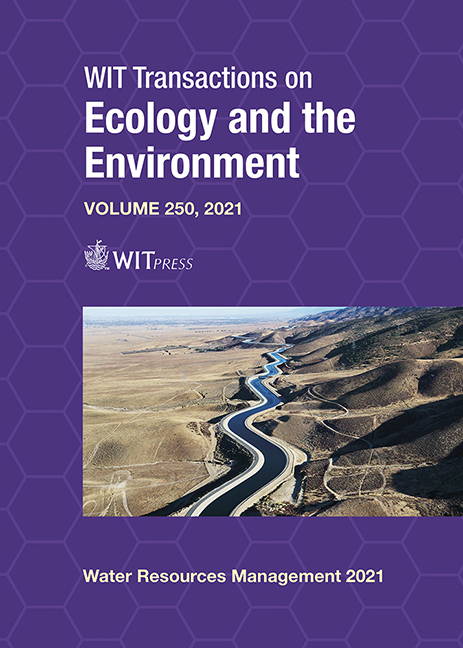COMMUNICATION METHODS ON WATER CARE DURING THE COVID-19 PANDEMIC AND ITS IMPACT ON THE RESILIENCE OF THE RURAL COMMUNITY OF “LIBERTADOR BOLÍVAR”, ECUADOR
Price
Free (open access)
Transaction
Volume
250
Pages
10
Page Range
109 - 118
Published
2021
Size
415 kb
Paper DOI
10.2495/WRM210101
Copyright
Author(s)
GRICELDA HERRERA-FRANCO, JOSELYN ALVARADO, PABLO GORDILLO, LENIN VEINTIMILLA, BETHY MERCHAN, PAÚL CARRIÓN-MERO, EDGAR BERREZUETA
Abstract
The COVID-19 pandemic has had a significant impact on the life of human beings. In rural areas, water supply and wastewater management are a survival challenge. They must be supported by universities sensitive to the current reality in order to achieve the Sustainable Development Goals, in its numeral 6, water and sanitation. In rural areas across the “Santa Elena” province, due to the isolation generated, communication was affected, especially sectors such as “Libertador Bolívar”, a dry-semi-arid zone located in the coastal area of Ecuador, which has access to drinking water collected from an aquifer through the service provided by the local entities. However, few know about its uses, benefits, and the maintenance that these systems require. The present study aims to validate communication methods, through the transmission of messages about the use and care of water in times of COVID-19. The methodology to follow is: i) potable and wastewater research, ii) surveys to measure knowledge about drinking water and sanitation, iii) preparation of diffusion material, iv) dissemination of messages through different digital media, and v) monitoring of social networks. It found that the Libertador Bolívar sector has a significant deficiency internet access, considering that only 8 out of 40 students at elementary school can receive virtual classes, and not necessarily through a computer, but through mobile devices; therefore, the most effective method for the information transmission were social media. Then, it proceeded to create an Instagram and Facebook page. In 4 weeks, 589 followers obtained on Facebook and 185 on Instagram, as well as significant interactions with this topic, mainly because a drought occurred (Presence of the climatic phenomenon “La Niña”) that aggravated the emergency to all the inhabitants. Finally, in times of pandemic, an excellent method of communication and diffusion are the social networks, due to its easy accessibility, which reflected in the resilience of interaction in the community.
Keywords
drinking water, wastewater, COVID-19, communication, resilience, social media





